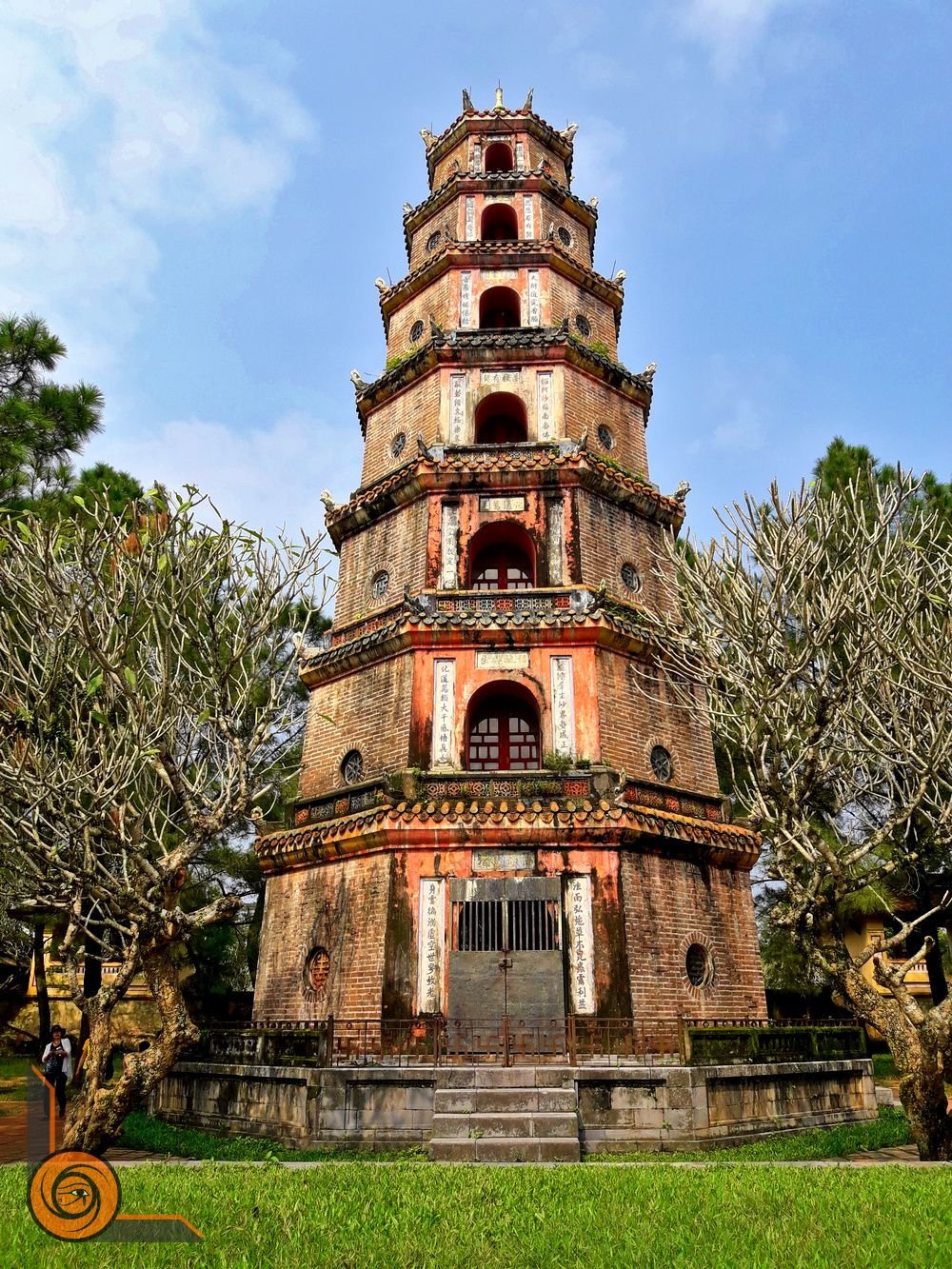There is not much going on in my life right now as I'm waiting for markets to recover so I won't go broke travelling. So it's time to let some of my older content have some time under spotlight. This one I took while travelling through South-East and South Asia last year.

Click on the image to view full screen
| Category | smartphonephotography |
| Location | Hue, Vietnam |
| Phone | Samsung Galaxy J7 |
The Thien Mu Pagoda (also called the Linh Mu Pagoda) is a historic pagoda on the banks of the Perfume River in Vietnam's historic city of Hue. Apart from their scenic riverside and hilltop location, the Thien Mu Pagoda and its environs are also rich in history, standing witness to almost four hundred years of tumultuous nation-building and religious belief in Vietnam.
Thien Mu Pagoda and the Vietnam War
The Shrine holds a rather grim reminder of the chaos that ripped through the country in the midst of the Vietnam War.
In 1963, a Buddhist monk from Thien Mu Pagoda, Thich Quang Duc, rode from Hue to Saigon. When he got to the capital, he burned himself on the street in an act of defiance against the pro-Catholic Ngo regime. The car that brought him to the capital is currently enshrined in the rear of the sanctuary hall - not much to look at now, a rusty old Austin sitting on wooden blocks, but still resonating with the power of that self-sacrificing gesture.
Thien Mu Pagoda's Ghostly Lady
Thien Mu Pagoda owes its existence to a local prophecy, and a lord who took it upon himself to fulfill it.
The pagoda’s name translates to “Heavenly Lady”, referring to a legend that an old woman had appeared on the hill, telling the locals about a Lord who would build a pagoda on that very site.
When Hue’s governor Lord Nguyen Hoang passed through and heard about the legend, he decided to fulfill the prophecy himself. In 1601, he ordered the construction of Thien Mu pagoda, at that point a rather simple structure, which was added on to and improved by his successors.
Renovations in 1665 and 1710 secured the addition of the bell and stele that now flank the Phuoc Duyen tower. The tower was added in 1844 by the Nguyen Emperor Thieu Tri. World War II did its share of damage, but a 30-year renovation program instituted by Buddhist monk Thich Don Hau have restored the temple to its present state.

If you liked this post, consider giving it an upvote or resteem. Follow me for more cool stuff and stay loco!
Check out my travel blog as well!
My recent posts:
Karaweik Palace in Yangon, Myanmar
Beheaded Goat and Bloody Idol above the Clouds in Himalayan Temple
Take a swim in an oasis in the hottest desert on Earth
Sectants and magic potions, Ayahuaska experience in Colombia
Turkish Nargile
Just a cat sunbathing in Agha Bozorg Mosque's yard, Iran
[Stoner Travels] Intro / Colombia, Bogota
The stories I'm most proud of:
Haiti: Poverty, gangsters and UN party
Exhausting ride along the border of Afghanistan
Beheaded Goat and Bloody Idol above the Clouds in Himalayan Temple
